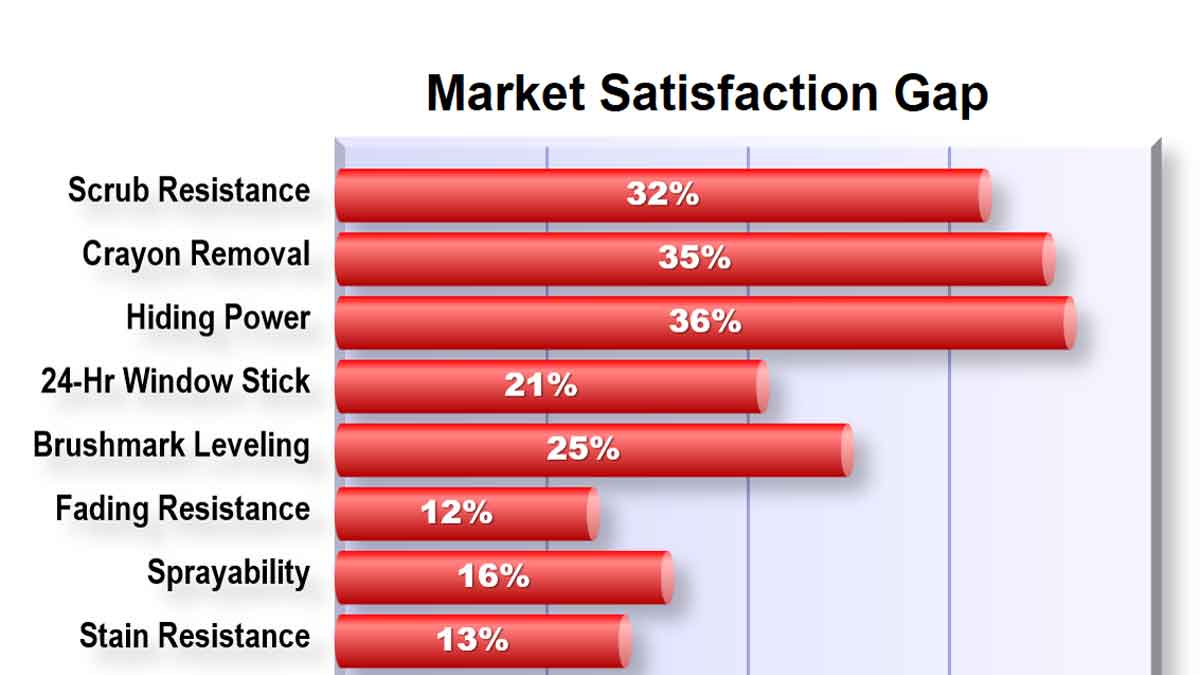Don’t let your future be “that time you’ll wish you’d done what you’re not doing now.” You’ll be thankful later if you recalibrate your time horizon now… diverting some of your short-term attention to the future of your business. Besides, what you do this quarter is largely a spectator sport. The prices, profits and margins we wring our hands about during financial reviews were determined years ago by the new products created then for customers.
More in e-book, Leader’s Guide to B2B Organic Growth (Lesson 7).
More specifically, it’s learning what you didn’t know about the customer’s world in your target market. If you think it’s about “ideating” to come up with cool supplier ideas—which you’ll “validate” with customers—you’ve got it all wrong. Start with customers and their needs… not with you and your notions. Focus on your solutions after you understand what those who might buy them want.
Learn more about B2B innovation at theaiminstitute.com
If your business goal is to “maximize shareholder wealth,” you should change it. See why this lovely-result-but-lousy-goal works against your growth ambitions. Understand the 3 rules exceptional companies follow. Make it your goal to “understand and meet customer needs better than others.”
More in article, Why Maximizing Shareholder Value Is a Flawed Goal
If you’re mainly concerned with making the place look good quarter after quarter, you’re an Interior Decorator. Jeff Bezos was a Builder… running Amazon for seven years before turning a profit. The stock market still applauded him, because he had a building plan they could believe in. As Warren Buffet said, “Companies obtain the shareholder constituency that they seek and deserve.”
More in article, How to become a great business leader
In a whispered voice, a B2B business executive confided to me that his company seldom spent more than $10k on their product launches… even after spending hundreds of thousands developing the product. This isn’t launching a product. This is kicking it off the loading dock and hoping someone finds it.
More in article, Stop Squandering Your Product Launch Budget
In Level 1, you start with your ideas and launch products you think customers will want. In Level 2, you still start with your ideas, but “validate” them with customers. In Level 3, you start with customer needs, using divergent and convergent interviews. You uncover a full range of outcomes and only work on those customers care about.
More in white paper, Guessing at Customer Needs (page 7).
In the last century, Detroit automakers fell behind Japanese competitors in the Quality Wave. Later, we saw winners and losers in the Productivity Wave. We’re now in the Innovation Wave, with huge consequences. Some B2B companies will win by moving innovation from “hope” into a new science.
More in white paper, Catch the Innovation Wave
The first is inherited growth from products launched long ago, which now “carry” your business. The second is market growth… the tide that lifts all boats. You can only impact the third—earned growth—by doing a better job than every competitor in understanding and meeting the needs of a market. This means it’s easy to be lulled into thinking your underlying growth is greater than it is.
More in white paper, Catch the Innovation Wave (page 14).
You can miss an important customer need… pursue the wrong need… over-design and add unneeded costs… measure customer success the wrong way… overlook a competing alternative… over-estimate what customers will pay… under-value your product… use improper messaging. So many chances to err. Fortunately, B2B producers can use a “science” to avoid all of these.
More in article, How to Avoid New-Product Commercial Risk
Do you have a true team… or just some “emissaries visiting from foreign functional areas”? Winning teams share these traits: a) Management signals this work is a top priority, b) the team leader is enthusiastic and capable, c) team success impacts personal performance reviews, and d) the team members want to be part of this team.
More in article, What’s Restraining Your Growth? Your Time Horizon
You’re developing your customer’s new product. It’s like this: “Mr. Customer, we’ve assembled a team aimed at developing something you’ll love. As you can see, we even brought a lead R&D person with us to listen to you. So can you tell us everything you think we should know before we going into our labs? We want to get this right so the innovation makes you a hero at work.”
More in article, Reduce Bias in Voice of the Customer
This can super-charge your organic growth: Don’t let your R&D conduct any product development work without unbiased, unfiltered data on what customers do and do not want. Market Satisfaction Gaps—based on importance and satisfaction scores for customer outcomes—provide this. You’ll free up enormous resources by working on only what matters.
More in white paper, Catch the Innovation Wave (page 13).
What else is there besides hearing customers’ needs? Impress them so they’ll want to do business with you. Incorporate your insights into a value calculator to optimize pricing. Use their precise interview language on your website to improve SEO. Uncover unspoken needs in a post-interview customer tour. Understand their next best alternative. Never stop learning.
More in article, You Already Answered 4 Questions, but… Correctly?
It’s usually a sign the new-product team has a supplier-centric mindset, not a customer-centric one. Validating hypotheses is converging around a supplier solution… which should occur after diverging around customer needs. It’s important to get the sequence right. Look around and study Problem Solving 101: Divergent thinking nearly always precedes convergent thinking.
More in article, Reduce Bias in Voice of the Customer











